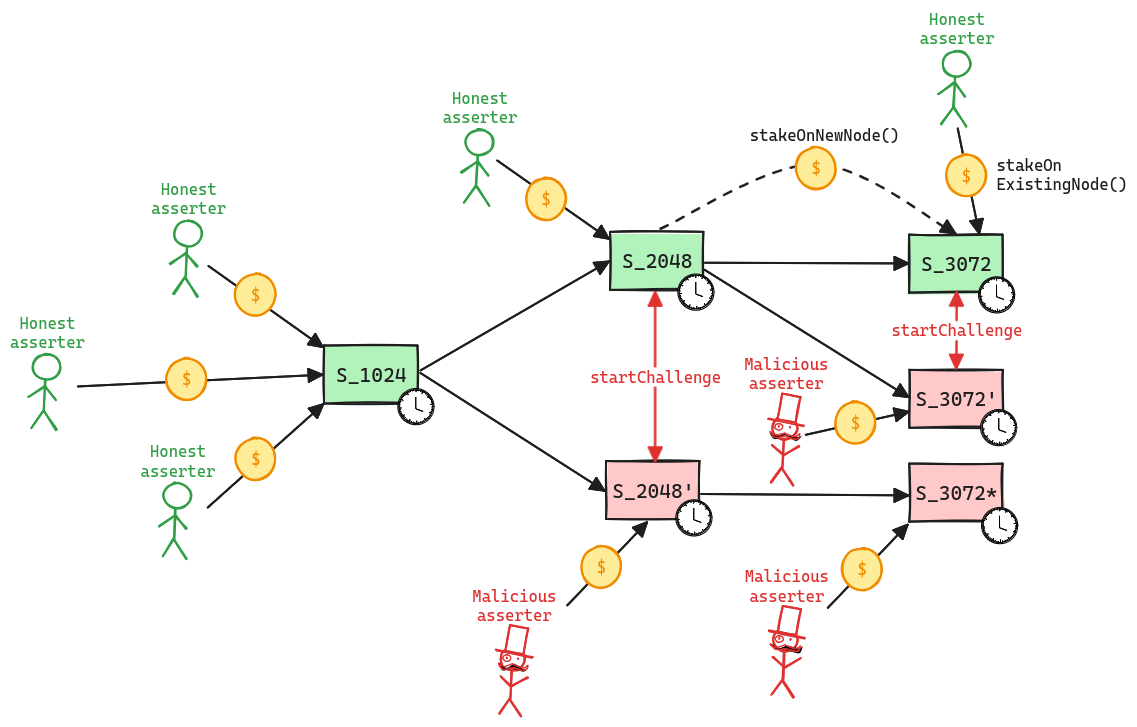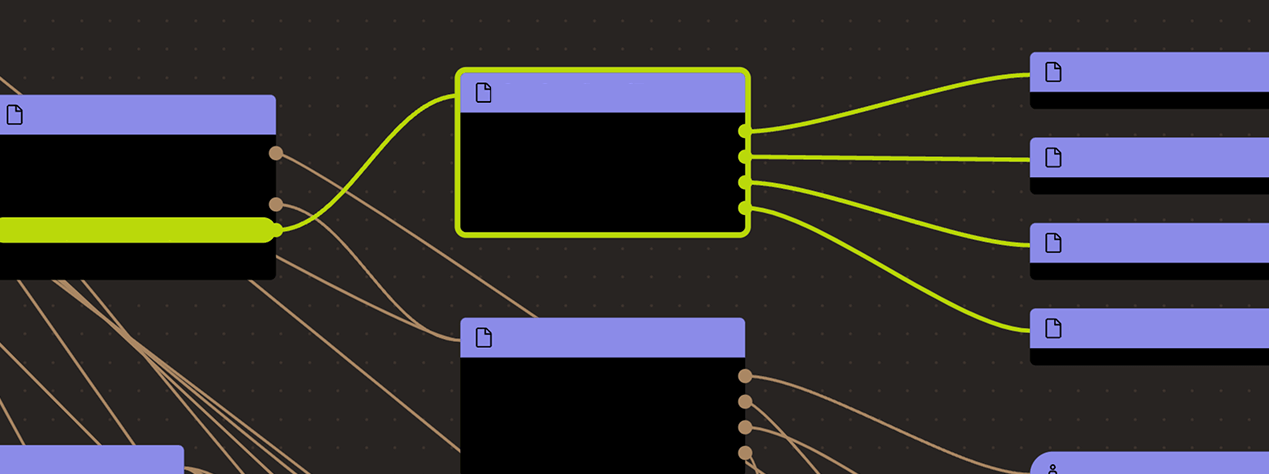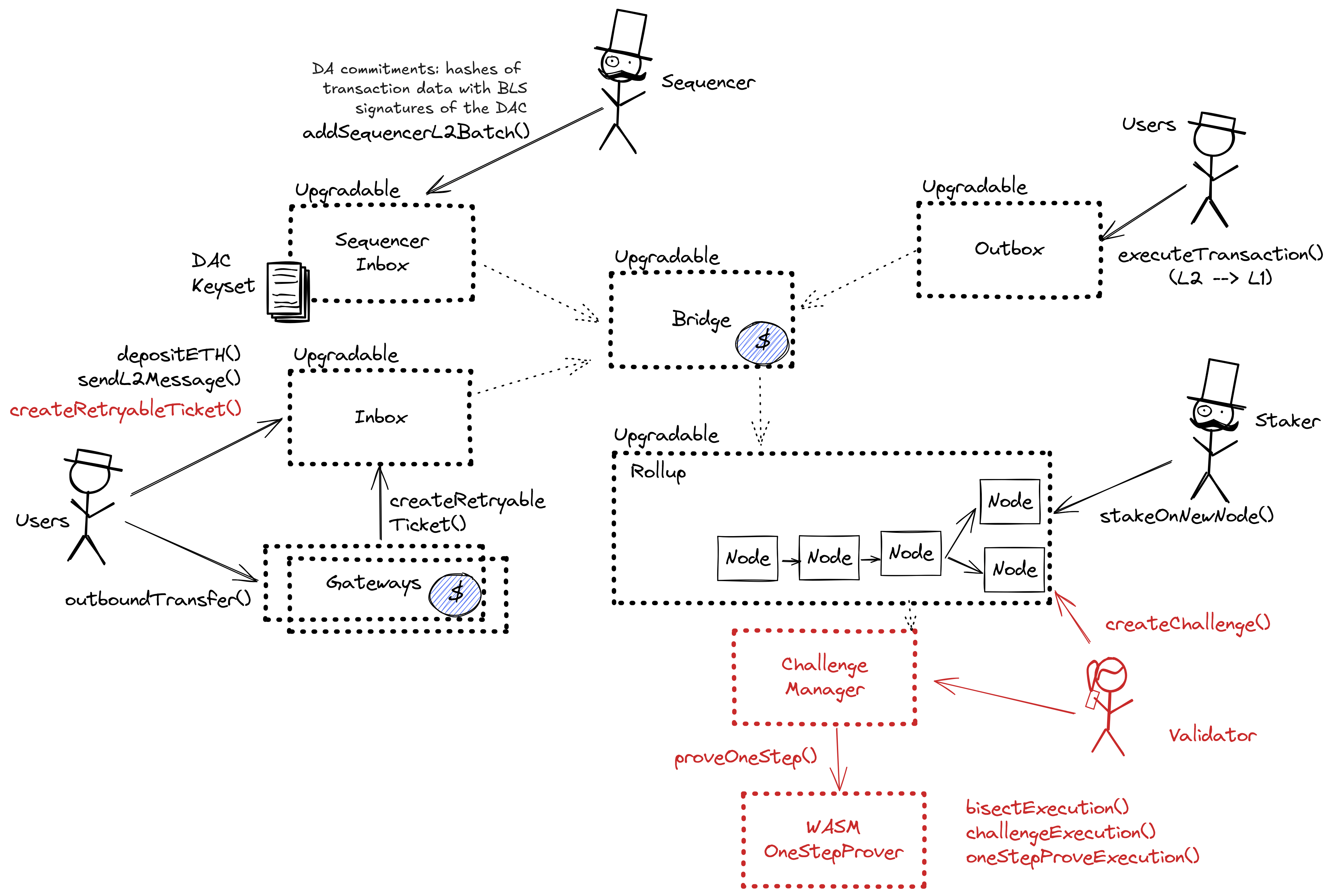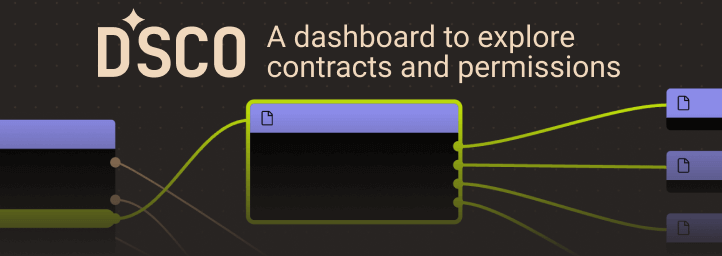Search
Search for projects by name
 Xai
Xai
Badges
About
Xai is an Ethereum Layer-3 that leverages Arbitrum AnyTrust to enable open trade in the next generation of video games.
Badges
About
Xai is an Ethereum Layer-3 that leverages Arbitrum AnyTrust to enable open trade in the next generation of video games.
Why is the project listed in others?
Consequence: projects without a sufficiently decentralized set of challengers rely on few entities to safely update the state. A small set of challengers can collude with the proposer to finalize an invalid state, which can cause loss of funds.
Consequence: projects with a low DAC threshold rely on the honesty of few entities to safely attest data availability on Ethereum. These entities can collude with the proposer to finalize an unavailable state, which can cause loss of funds.
Learn more about the recategorisation here.
2025 Jan 06 — 2026 Jan 06
Funds can be stolen if
Funds can be lost if
Users can be censored if
MEV can be extracted if
| SEQUENCER FAILURE | STATE VALIDATION | DATA AVAILABILITY | EXIT WINDOW | PROPOSER FAILURE | |
| Arbitrum One L2 | Self sequence | Fraud proofs (INT) | Onchain | 10d | Self propose |
| Xai L3 • Individual | Self sequence | Fraud proofs (INT) | External (DAC) | None | Self propose |
| Xai L3 • Combined | Self sequence | Fraud proofs (INT) | External (DAC) | None | Self propose |
Fraud proofs only allow 2 WHITELISTED actors watching the chain to prove that the state is incorrect. Interactive proofs (INT) require multiple transactions over time to resolve. The challenge protocol can be subject to delay attacks. There is a 6d 8h challenge period.
Proof construction relies fully on data that is NOT published onchain. There exists a Data Availability Committee (DAC) with a threshold of 3/5 that is tasked with protecting and supplying the data.
There is no window for users to exit in case of an unwanted regular upgrade since contracts are instantly upgradable.
Anyone can become a Proposer after 12d 17h of inactivity from the currently whitelisted Proposers.
Set of parties responsible for signing and attesting to the availability of data.
There are no onchain assets at risk of being slashed in case of a data withholding attack. However, there is indirect economic security derived by the committee members being publicly known, and their reputation is at stake should they behave maliciously.
There is no fraud detection mechanism in place. A data withholding attack can only be detected by nodes downloading the full data from the DA layer.
The committee does not meet basic security standards, either due to insufficient size, lack of member diversity, or poorly defined threshold parameters. The system lacks an effective DA bridge and it is reliant on the assumption of an honest sequencer, creating significant risks to data integrity and availability.
There is no delay in the upgradeability of the bridge. Users have no time to exit the system before the bridge implementation update is completed.
The relayer role is permissioned, and the DA bridge does not have a Security Council or a governance mechanism to propose new relayers. In case of relayer failure, the DA bridge will halt and be unable to recover without the intervention of a centralized entity.
Architecture

The DAC uses a data availability solution built on the AnyTrust protocol. It is composed of the following components:
- Sequencer Inbox: Main entry point for the Sequencer submitting transaction batches.
- Data Availability Committee (DAC): A group of members responsible for storing and providing data on demand.
- Data Availability Certificate (DACert): A commitment ensuring that data blobs are available without needing full data posting on the L1 chain.
Committee members run servers that support APIs for storing and retrieving data blobs. The Sequencer API allows the rollup Sequencer to submit data blobs for storage, while the REST API enables anyone to fetch data by hash. When the Sequencer produces a data batch, it sends the batch along with an expiration time to Committee members, who store it and sign it. Once enough signatures are collected, the Sequencer aggregates them into a valid DACert and posts it to the L1 chain inbox. If the Sequencer fails to collect enough signatures, it falls back to posting the full data to the L1 chain as calldata.
A DACert includes a hash of the data block, an expiration time, and proof that the required threshold of Committee members have signed off on the data. The proof consists of a hash of the Keyset used in signing, a bitmap indicating which members signed, and a BLS aggregated signature. L2 nodes reading from the sequencer inbox verify the certificate’s validity by checking the number of signers, the aggregated signature, and that the expiration time is at least two weeks ahead of the L2 timestamp. If the DACert is valid, it provides a proof that the corresponding data is available from honest committee members.
DA Bridge Architecture

The DA commitments are posted to the destination chain through the sequencer inbox, using the inbox as a DA bridge. The DA commitment consists of Data Availability Certificate (DACert), including a hash of the data block, an expiration time, and a proof that the required threshold of Committee members have signed off on the data. The sequencer distributes the data and collects signatures from Committee members offchain. Only the DACert is posted by the sequencer to the destination chain inbox (the DA bridge), achieving destination chain transaction ordering finality in a single onchain transaction.
Funds can be lost if a malicious committee attests to an invalid data availability certificate.
Funds can be lost if the bridge contract or its dependencies receive a malicious code upgrade. There is no delay on code upgrades.

After some period of time, the published state root is assumed to be correct. For a certain time period, one of the whitelisted actors can submit a fraud proof that shows that the state was incorrect. The challenge protocol can be subject to delay attacks. After the state root is published, there is also a trusted entity, called Challenger, that signs it and submits the signature to a Referee smart contract. The signatures submitted to the referee are used then verified by sentry nodes. The role of sentry nodes is to verify (assert) the submitted state root after it has been submitted. There is no integrated way to flag an invalid state root, sentry nodes will have to raise the alarm by external means, making them just observation nodes.
Funds can be stolen if none of the whitelisted verifiers checks the published state. Fraud proofs assume at least one honest and able validator (CRITICAL).
- How is fraud proven - Arbitrum documentation FAQ
- Arbitrum Glossary: Challenge Period
- RollupUser.sol - Etherscan source code, onlyValidator modifier
- Referee.sol - Etherscan source code, submitChallenge function
- Referee.sol - Etherscan source code, submitAssertionToChallenge function
- Solutions to Delay Attacks on Rollups
The system has a centralized sequencer
While forcing transaction is open to anyone the system employs a privileged sequencer that has priority for submitting transaction batches and ordering transactions.
MEV can be extracted if the operator exploits their centralized position and frontruns user transactions.
Users can force any transaction
Because the state of the system is based on transactions submitted on the underlying host chain and anyone can submit their transactions there it allows the users to circumvent censorship by interacting with the smart contract on the host chain directly. After a delay of 1d in which a Sequencer has failed to include a transaction that was directly posted to the smart contract, it can be forcefully included by anyone on the host chain, which finalizes its ordering.
Delayed forced transactions
To force transactions from the host chain, users must first enqueue “delayed” messages in the “delayed” inbox of the Bridge contract. Only authorized Inboxes are allowed to enqueue delayed messages, and the so-called Inbox contract is the one used as the entry point by calling the sendMessage or sendMessageFromOrigin functions. If the centralized sequencer doesn’t process the request within some time bound, users can call the forceInclusion function on the SequencerInbox contract to include the message in the canonical chain. The time bound is hardcoded to be 1d.
Autonomous exit
Users can (eventually) exit the system by pushing the transaction on L1 and providing the corresponding state root. The only way to prevent such withdrawal is via an upgrade.
EVM compatible smart contracts are supported
Arbitrum One uses Nitro technology that allows running fraud proofs by executing EVM code on top of WASM.

The DA committee has the following members:
Arbitrum One
Roles:
Can submit transaction batches or commitments to the SequencerInbox contract on the host chain.
Can propose new state roots (called nodes) and challenge state roots on the host chain.
Actors:
A Multisig with 3/5 threshold.
- Can upgrade with no delay
- UpgradeExecutor UpgradeExecutor → ProxyAdmin
- Outbox UpgradeExecutor → ProxyAdmin
- GatewayRouter UpgradeExecutor → ProxyAdmin
- RollupEventInbox UpgradeExecutor → ProxyAdmin
- ChallengeManager UpgradeExecutor → ProxyAdmin
- Bridge UpgradeExecutor → ProxyAdmin
- SequencerInbox UpgradeExecutor → ProxyAdmin
- Inbox UpgradeExecutor → ProxyAdmin
- ERC20Gateway UpgradeExecutor → ProxyAdmin
- RollupProxy UpgradeExecutor
- Can interact with RollupProxy
- Pause and unpause and set important roles and parameters in the system contracts: Can delegate Sequencer management to a BatchPosterManager address, manage data availability, DACs and the fastConfirmer role, set the Sequencer-only window, introduce an allowList to the bridge and whitelist Inboxes/Outboxes UpgradeExecutor
A Multisig with 4/6 threshold.
- Can upgrade with no delay
- PoolProxyDeployer ProxyAdmin
- GasSubsidy ProxyAdmin
- NodeLicenseRegistry ProxyAdmin
- RefereeCalculations ProxyAdmin
- PoolFactory ProxyAdmin
- SentryReferee ProxyAdmin
A Multisig with 1/3 threshold. Member of XaiMultisig.
A Multisig with 3/6 threshold. The designated fundsReceiver in the NodeLicenseRegistry. Receives all ETH from ‘Sentry Node License’ mints.
- A Validator - acting directly
Member of XaiMultisig2.
- Can interact with SequencerInbox
- Add/remove batchPosters (Sequencers) XaiMultisig2
- A Sequencer - acting directly


Arbitrum One
Contract that allows challenging state roots. Can be called through the RollupProxy by Validators or the UpgradeExecutor.
- Roles:
- admin: ProxyAdmin; ultimately XaiMultisig
A sequencer (registered in this contract) can submit transaction batches or commitments here.
- Roles:
- admin: ProxyAdmin; ultimately XaiMultisig
- batchPosterManager: XaiMultisig2; ultimately EOA 3, EOA 5, EOA 6
- batchPosters: EOA 4
Central contract for the project’s configuration like its execution logic hash (wasmModuleRoot) and addresses of the other system contracts. Entry point for Proposers creating new Rollup Nodes (state commitments) and Challengers submitting fraud proofs (In the Orbit stack, these two roles are both held by the Validators).
- Roles:
- admin: UpgradeExecutor; ultimately XaiMultisig
- owner: UpgradeExecutor; ultimately XaiMultisig
- validators: EOA 1, EOA 2
Central contract defining the access control permissions for upgrading the system contract implementations.
- Roles:
- admin: ProxyAdmin; ultimately XaiMultisig
- executors: XaiMultisig
Escrows deposited ERC-20 assets for the canonical Bridge. Upon depositing, a generic token representation will be minted at the destination. Withdrawals are initiated by the Outbox contract.
- Roles:
- admin: ProxyAdmin; ultimately XaiMultisig
- This contract can store any token.
This routing contract maps tokens to the correct escrow (gateway) to be then bridged with canonical messaging.
- Roles:
- admin: ProxyAdmin; ultimately XaiMultisig
- Roles:
- owner: UpgradeExecutor
One of the modular contracts used for the last step of a fraud proof, which is simulated inside a WASM virtual machine.
Helper contract sending configuration data over the bridge during the systems initialization.
- Roles:
- admin: ProxyAdmin; ultimately XaiMultisig
One of the modular contracts used for the last step of a fraud proof, which is simulated inside a WASM virtual machine.
Manages beacon addresses for the v2 staking pools.
- Roles:
- admin: ProxyAdmin; ultimately SafeL2
This contract implements view only utilities for validators.
- Roles:
- admin: ProxyAdmin; ultimately SafeL2
This is the contract where Xai Sentry Keys for running a sentry node are minted.
- Roles:
- admin: ProxyAdmin; ultimately SafeL2
- Roles:
- admin: ProxyAdmin; ultimately SafeL2
- Roles:
- owner: SafeL2
One of the modular contracts used for the last step of a fraud proof, which is simulated inside a WASM virtual machine.
One of the modular contracts used for the last step of a fraud proof, which is simulated inside a WASM virtual machine.
One of the modular contracts used for the last step of a fraud proof, which is simulated inside a WASM virtual machine.
The PoolFactory allows creating and managing staking pools for V2 staking. Users can stake esXAI (and / or Sentry Keys) in pools. This contract’s address is whitelisted in the esXAI token contract, which allows it to initiate arbitrary esXAI token transfers. V2 staking through this contract is currently set to true.
- Roles:
- admin: ProxyAdmin; ultimately SafeL2
The referee contract manages the Xai Sentry protocol. Sentry nodes that are tasked to watch the state transitions on Xai receive esXAI rewards for their service. These watchers participate in a game with a central ‘challenger’ by posting their assertions to make sure they are actually watching. In case of a malicious state transition, sentries are supposed to raise an alarm offchain. The referee contract is also a whitelisted address in the esXAI token contract, which allows it to initiate arbitrary esXAI token transfers. New staking through this contract is disabled in favor of the new v2 staking. V1 Stakers can continue to get staking rewards here or withdraw/migrate their assets.
- Roles:
- admin: ProxyAdmin; ultimately SafeL2
Value Secured is calculated based on these smart contracts and tokens:
Main entry point for users depositing ERC20 tokens. Upon depositing, on L2 a generic, “wrapped” token will be minted.
Contract managing Inboxes and Outboxes. It escrows XAI sent to L2.
The current deployment carries some associated risks:
Funds can be stolen if a contract receives a malicious code upgrade. There is no delay on code upgrades (CRITICAL).
